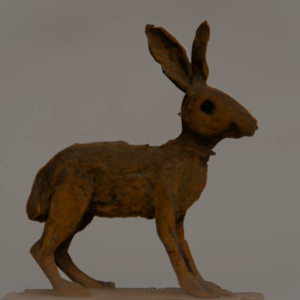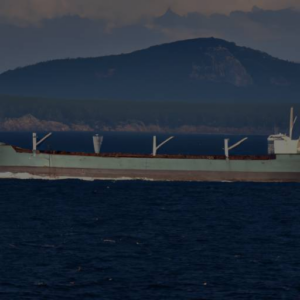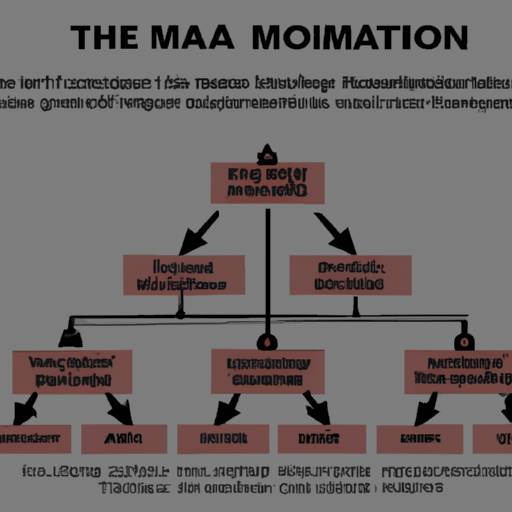On November 22, 1963, the world was forever changed when President John F. Kennedy was assassinated in Dallas, Texas. In the midst of the chaos and tragedy, one figure has garnered much attention and controversy: William Greer, the Secret Service agent driving the presidential limousine. This blog post aims to shed light on the various theories and perspectives surrounding Greer’s actions during that fateful day. By exploring this controversial topic, we hope to deepen our understanding and empathy for the complex circumstances surrounding this momentous event.
Background of William Greer
In the world of conspiracy theories and speculation surrounding the assassination of President John F. Kennedy, one name that often comes up is that of William Greer. As the driver of President Kennedy’s limousine on that fateful day in Dallas, Greer has been the subject of much scrutiny and controversy. In this blog post, we will take a closer look at Greer’s background, experience, and responsibilities as a Secret Service agent.
Early Life and Career
- William Robert Greer was born on September 22, 1909, in Stewartstown, County Tyrone, Ireland.
- At the age of 10, Greer and his family immigrated to the United States and settled in Boston, Massachusetts.
- Greer joined the United States Navy in 1927 and served for five years before being honorably discharged.
- After leaving the Navy, Greer worked as a chauffeur in Boston, where he gained valuable experience behind the wheel.
Secret Service Career
- In 1945, Greer joined the United States Secret Service, where he began his career as a chauffeur for President Harry S. Truman.
- Over the years, Greer served as a driver for several other presidents, including Dwight D. Eisenhower and John F. Kennedy.
- Greer’s responsibilities as a Secret Service agent extended beyond driving. He was also trained in firearms and emergency medical procedures, ensuring his ability to handle any situation that might arise.
- Greer was highly regarded by his colleagues for his professionalism, loyalty, and dedication to protecting the President.
The Day of the Assassination
- On November 22, 1963, William Greer was behind the wheel of President Kennedy’s limousine during the motorcade through Dallas, Texas.
- As the shots rang out, Greer reacted quickly by accelerating the vehicle to get the President to safety.
- The assassination of President Kennedy remains one of the most tragic and controversial events in American history, and Greer’s actions on that day have been the subject of intense scrutiny and debate.
The Assassination of President Kennedy
The assassination of President John F. Kennedy on November 22, 1963, in Dallas, Texas, remains one of the most pivotal moments in American history. This blog post aims to provide a detailed account of the events leading up to and during the assassination, focusing on the actions of William Greer, the driver of Kennedy’s limousine, and the controversy surrounding his response to the attack.
Background
Before delving into the events of that fateful day, it is important to understand the political climate and the significance of President Kennedy’s visit to Dallas. Here are some key points:
- President Kennedy was in Texas as part of a political trip to gain support for his upcoming reelection campaign.
- The political atmosphere was tense, with opposition to Kennedy’s policies and growing social unrest.
- The route chosen for the motorcade was a subject of debate due to security concerns.
The Motorcade
On the day of the assassination, President Kennedy, accompanied by First Lady Jacqueline Kennedy, Texas Governor John Connally, and his wife, Nellie Connally, embarked on a motorcade through Dallas. The motorcade passed through Dealey Plaza, where the tragic events unfolded.
The Shooting
At approximately 12:30 PM, shots rang out, striking President Kennedy and Governor Connally. Here are the key details:
- The shots were fired from the Texas School Book Depository, leading to an immediate response from the Secret Service and local authorities.
- President Kennedy was hit in the head and neck, while Governor Connally sustained serious injuries.
- Chaos and confusion ensued as the motorcade sped to Parkland Memorial Hospital.
William Greer’s Actions
As the driver of the presidential limousine, William Greer’s actions during the crucial moments of the assassination have been a subject of controversy. Here is an examination of his response:
- Greer was driving the limousine at the time of the shooting.
- Video footage shows that after the first shots were fired, Greer momentarily slowed down, turning his head towards the President and the backseat.
- Some critics argue that this delay may have hindered the chances of a successful response or escape.
The Controversy
The actions of William Greer have sparked intense debate and speculation. Here are some key points regarding the controversy surrounding his response:
- Supporters of Greer argue that he followed standard Secret Service protocol during an unexpected attack.
- Critics suggest that Greer’s delay in accelerating the vehicle may have cost President Kennedy crucial moments for survival.
- The controversy surrounding Greer’s actions continues to be a subject of discussion and analysis.
The Controversial Moments
In the realm of conspiracy theories surrounding the assassination of President John F. Kennedy, few moments are as controversial as the actions of William Greer, the Secret Service agent driving the presidential limousine on that fateful day in Dallas. This blog post aims to explore the different theories and interpretations regarding Greer’s actions, discussing the critiques and allegations against him, as well as the arguments presented in his defense.
The Allegations Against Greer
Several key allegations have been made against William Greer, suggesting his involvement in the assassination plot. These allegations are based on different interpretations of the available evidence:
- Slow reaction time: One of the main critiques against Greer is that he allegedly reacted slowly to the first gunshot, which allowed the subsequent shots to hit President Kennedy and Texas Governor Connally. This delay has raised suspicion among some conspiracy theorists.
- The “head turn” theory: Another controversial moment captured in the famous Zapruder film is Greer’s apparent turn towards Kennedy just before the fatal headshot. Some conspiracy theorists argue that this movement was intentional and that Greer may have been involved in the plot to assassinate the president.
- The “back and to the left” theory: Many conspiracy theorists point to the movement of Kennedy’s body after the final shot as evidence of a second shooter. They argue that Greer’s actions may have contributed to this movement, possibly to cover up the existence of another gunman.
Arguments in Greer’s Defense
While the allegations against William Greer are certainly compelling, it is important to consider the counterarguments and interpretations that defend his actions:
- High-stress situation: It is crucial to remember that Greer was driving the presidential limousine during a chaotic and high-stress moment. In such an intense situation, it is possible for even experienced professionals to exhibit unexpected reactions or delays.
- Lack of training: Some defenders of Greer argue that the Secret Service agents at the time did not receive sufficient training for such scenarios. This lack of training could explain any perceived mistakes or delays in their responses.
- Limited visibility: The specific configuration of the presidential limousine made it difficult for Greer to have a clear line of sight to the source of the gunfire. The curvature of the vehicle and the angle of the windshield may have hindered his ability to react promptly.
What happened to JFK's presidential limo?
The limo carrying President John F. Kennedy when he was assassinated continued to be used by the three next presidents and ...
Public Perception of the Secret Service
One significant result of the controversy surrounding William Greer’s actions is the lasting impact it has had on public perception of the Secret Service. Prior to the assassination of President Kennedy, the Secret Service was often seen as an elite force responsible for protecting the President and other high-ranking officials. However, the revelation that an agent may have contributed to the President’s death shattered this perception and raised doubts about the competence and effectiveness of the agency.
Key Points:
- Prior to the controversy, the Secret Service enjoyed a positive reputation for its protection services.
- William Greer’s actions raised doubts about the competence and effectiveness of the agency.
- Public perception of the Secret Service was significantly impacted by the controversy.
Shaping Subsequent Security Protocols
The controversy surrounding Greer’s actions also had a profound influence on subsequent security protocols implemented by the Secret Service. In the wake of the assassination, the agency faced intense scrutiny and pressure to reassess and enhance its protective measures.
Comparison Table: Pre and Post-Controversy Security Protocols
| Pre-Controversy Security Protocols | Post-Controversy Security Protocols |
|---|---|
| Less emphasis on driver training and preparedness | Increased focus on driver training, including defensive driving techniques and emergency response procedures |
| Limited technology available for real-time threat detection | Adoption of advanced surveillance systems, including closed-circuit television (CCTV), to monitor and identify potential threats |
| Reliance on manual firearms for protection | Introduction of more sophisticated weaponry and non-lethal options, such as TASERs, to ensure the safety of protected individuals |
| Limited coordination and communication during motorcades | Implementation of enhanced communication systems and protocols to improve coordination between agents and law enforcement agencies |
Key Points:
- Pre-controversy security protocols lacked emphasis on driver training, technology, and coordination.
- Post-controversy, the Secret Service implemented enhanced driver training, advanced surveillance systems, sophisticated weaponry, and improved communication protocols.
- The changes aimed to address the vulnerabilities exposed by Greer’s actions and ensure the safety of protected individuals.
In conclusion, this blog post has provided an overview of the controversy surrounding William Greer’s actions on November 22, 1963. While opinions differ, it is crucial to consider the circumstances and challenges faced by Greer in the midst of the assassination. It is up to the reader to assess the available evidence and factors at play in order to form their own perspective on this contentious issue.
Frequently Asked Questions about William Greer
What actions did William Greer take during the events of that day?
William Greer was the driver of the presidential limousine during the events of that day. He took several actions in response to the unfolding situation. Firstly, when the first shots were fired, Greer turned his head to look at President John F. Kennedy in the backseat. Shortly after, he slowed down the vehicle, which has been a subject of controversy and criticism. As the motorcade approached the infamous Grassy Knoll, Greer accelerated the limousine. Finally, after the fatal shot was fired, he made a left turn onto Elm Street, heading towards Parkland Memorial Hospital. These actions were observed and recorded by multiple witnesses and captured on film, and they played a significant role in the sequence of events on that tragic day.
How has the controversy surrounding William Greer’s actions impacted the overall narrative of the Kennedy assassination?
The controversy surrounding William Greer’s actions has had a significant impact on the overall narrative of the Kennedy assassination. William Greer, the Secret Service agent driving President John F. Kennedy’s limousine on that fateful day in November 1963, has been the subject of intense scrutiny and speculation.
One of the key points of contention is Greer’s alleged delay in reacting to the shots fired at Kennedy’s motorcade. Some conspiracy theories suggest that Greer intentionally slowed down the vehicle, allowing more time for the assailant(s) to take multiple shots. This theory gained traction mainly due to the infamous Zapruder film, which captured the assassination and showed Greer’s movements.
However, it is important to note that the majority of official investigations, including the Warren Commission report, have concluded that Greer’s actions were not deliberate and did not contribute to the assassination. The Warren Commission stated that Greer’s slow reaction was likely due to the shock and confusion of the moment.
Nonetheless, the controversy surrounding Greer’s actions has fueled skepticism and conspiracy theories about the true nature of the Kennedy assassination. It has contributed to the broader narrative that there may have been a larger conspiracy or cover-up involved. This narrative continues to persist, despite the official findings.
Furthermore, the focus on Greer’s actions has led to increased scrutiny of the Secret Service’s role in protecting the president. It prompted a reassessment of security protocols and procedures, leading to reforms to ensure better protection for future presidents.
In conclusion, the controversy surrounding William Greer’s actions has had a lasting impact on the overall narrative of the Kennedy assassination. While official investigations have largely dismissed the notion that Greer intentionally contributed to the assassination, the controversy has fueled conspiracy theories and skepticism about the official account. It has also prompted changes in Secret Service protocols and procedures to enhance presidential security.













